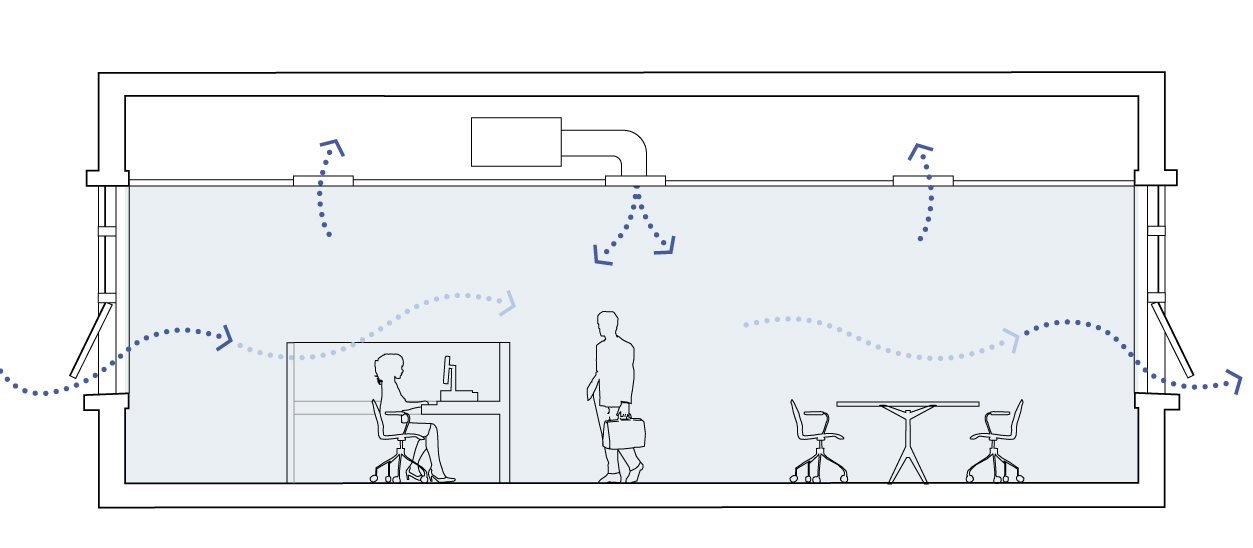Investigating multiple topics related to mixed-mode buildings.
Status: Completed
Funding Sources: CBE Energy Consortium Research Grants
Project Objective
Mixed-mode buildings employ a hybrid approach to space conditioning that combines operable windows and mechanical cooling. By taking advantage of the strengths of both systems, well designed mixed-mode buildings can be more comfortable and use less energy.
Project Results
This body of work has led to research findings stemming from multiple research projects on mixed-mode building design and operation. See related projects at right.
Significance to Industry
People who have more control over their indoor environments are typically more satisfied with temperature, air movement, and air quality. Mixed-mode buildings give occupants control while still allowing central control to keep the building near the comfort zone.
Research Approach
Classification
The three basic categories of mixed-mode buildings describe how natural ventilation and mechanical cooling operate at different times and places. Concurrent systems allow open windows and air conditioning at the same time in the same place; changeover systems allow them at different times in the same places; zoned systems allow them at the same time in different places.
While these categories are useful, they cannot by themselves describe the diversity of mixed-mode operating strategies that are used in real buildings. In particular, they do not shine any light on the dynamics that drive the choice of operating strategy. We examined descriptions of high level operation strategies as well as of specific control algorithms of 28 mixed-mode buildings and created a new taxonomy. Control strategies are classified according to three mutually independent classes of issues that guide the decision-making process: programmatic/spatial, temporal/climatic, and practical. In addition, we recommend classifying zones rather than whole buildings because multiple strategies are often employed in a single building.
Retrofits
Mixed-mode ventilation allows older naturally ventilated buildings to be retrofitted to conform to modern expectations of comfort more cheaply while keeping the advantages of operable windows. We examined 33 non-residential mixed-mode retrofit projects to find trends in the types of changes that are made, particularly by retrofit activity and building vintage. All of the projects had pre-existing operable windows. Most projects avoided automated window controls, thereby requiring more buy-in and active participation from occupants. Overall, solutions relate more to the available tools and partnerships that can advocate for natural ventilation than to physical conditions, which makes it difficult to generalizing what opportunities are available.
Publications and Reports
Brager, G. and K. Ackerly, 2010. Mixed-Mode Ventilation and Building Retrofits. CBE Internal Report, February.
Brager, G. and L. Baker, 2008. Occupant Satisfaction in Mixed-Mode Buildings, Proceedings, Air Conditioning and the Low Carbon Cooling Challenge, Windsor, UK, July.
Brager, G., S. Borgeson, and Y. Lee, 2007. Control Strategies for Mixed-Mode Buildings. CBE Summary Report, October.
Brager, G. 2006. Mixed-Mode Cooling. ASHRAE Journal, pp. 30-37. August.
Brager, G., E. Ring, and K. Powell, 2000. Mixed-mode Ventilation: HVAC Meets Mother Nature. Engineered Systems, May, pp. 60-70.

